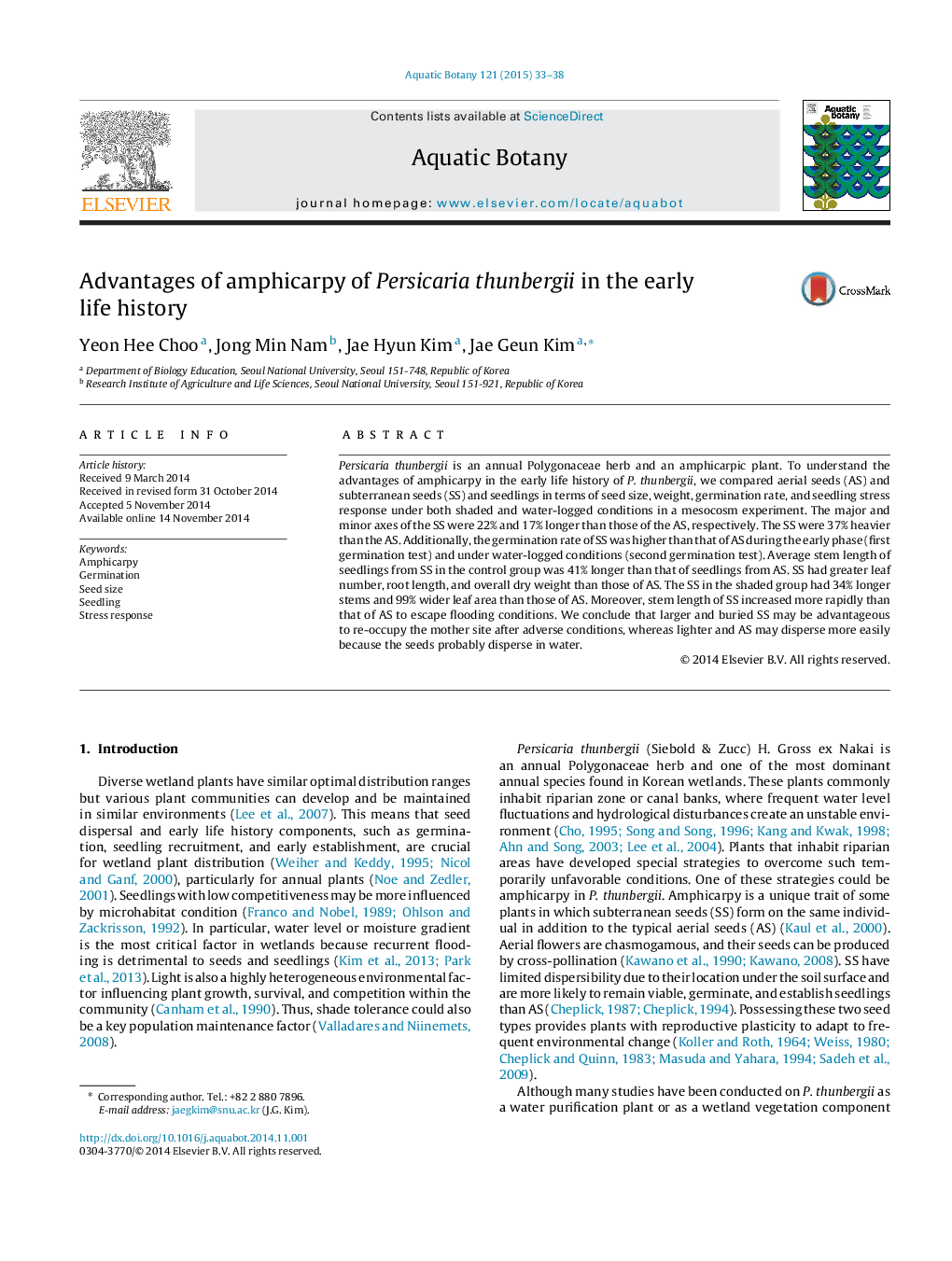| Article ID | Journal | Published Year | Pages | File Type |
|---|---|---|---|---|
| 4527684 | Aquatic Botany | 2015 | 6 Pages |
•The subterranean seeds can help seed settlement and growth in early stages.•The aerial seeds have the benefit of a variety of germination timings.•P. thunbergii can utilize amphicarpy to overcome a capricious environment.
Persicaria thunbergii is an annual Polygonaceae herb and an amphicarpic plant. To understand the advantages of amphicarpy in the early life history of P. thunbergii, we compared aerial seeds (AS) and subterranean seeds (SS) and seedlings in terms of seed size, weight, germination rate, and seedling stress response under both shaded and water-logged conditions in a mesocosm experiment. The major and minor axes of the SS were 22% and 17% longer than those of the AS, respectively. The SS were 37% heavier than the AS. Additionally, the germination rate of SS was higher than that of AS during the early phase (first germination test) and under water-logged conditions (second germination test). Average stem length of seedlings from SS in the control group was 41% longer than that of seedlings from AS. SS had greater leaf number, root length, and overall dry weight than those of AS. The SS in the shaded group had 34% longer stems and 99% wider leaf area than those of AS. Moreover, stem length of SS increased more rapidly than that of AS to escape flooding conditions. We conclude that larger and buried SS may be advantageous to re-occupy the mother site after adverse conditions, whereas lighter and AS may disperse more easily because the seeds probably disperse in water.
